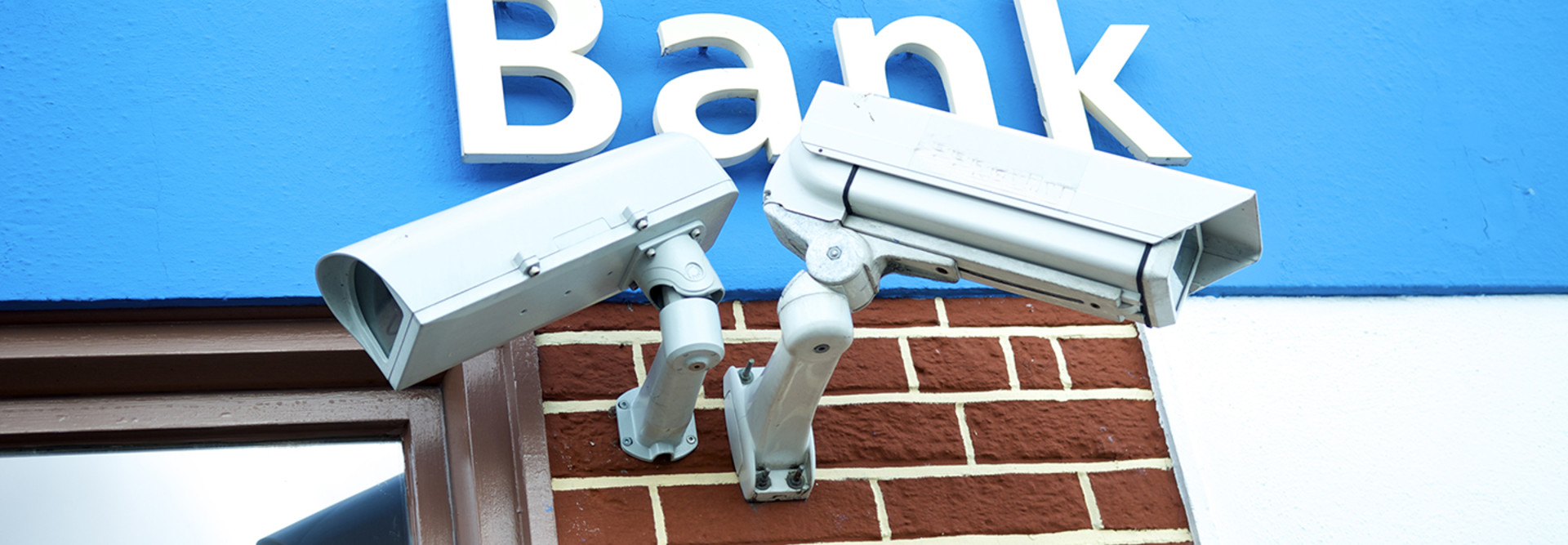4 Key Technologies Behind Advanced Video Surveillance
There’s a new standard in bank security.
Enhanced by analytics software, modern surveillance systems give financial institutions the tools they need to take proactive safety measures while preventing fraud. But upgrading legacy cameras and digital video recorders — and realizing the benefits of advanced solutions — requires the right mix of supporting technologies.
1. Connected Video Cameras Keep an Eye on High-Risk Areas
With options for indoor, outdoor and low-light areas, IP-based cameras capture high-megapixel images and HD video, and can offer special features such as motion or noise detection and alarm notification. Financial institutions investing in cameras should not only consider which capabilities make the most sense but also identify the best camera positioning, whether it’s near valuable assets or high-traffic areas, entrances and exits.
2. Video Management Systems Create Organizational Efficiencies
As banks add more connected cameras to their surveillance environments, it becomes increasingly difficult for security teams to keep up with the volume of data. Implementing a video management system (VMS) arms IT staff with artificial intelligence, predictive analytics software and other tools that automate security alerts and make it easier to respond to threats in real time.
3. Scalable Storage Makes Room for More Data
Storage might not be the most obvious component of an advanced surveillance system, but it’s not to be overlooked.
“Organizations sometimes undermine their video surveillance investments by reducing frame rates or resolution to squeeze more out of their storage,” writes Lisa Litherland, a CDW business architect focused on the Internet of Things and digital transformation. “But that results in choppy or grainy footage, and, in turn, makes it harder for the VMS to do its job.”
All-flash storage solutions from vendors such as Nimble Storage and NetApp can provide fast, reliable access to frequently accessed data; meanwhile, cloud-based object storage solutions offers ultimate scalability, making it ideal for the massive amounts of data generated by surveillance technology. And both enable banks to retain video footage longer, which could prove critical should an instance of fraud arise.
4. Network Upgrades Support High-Quality Video Surveillance
Increasing the quality of surveillance images and videos doesn’t just impact storage; it also necessitates network improvements, particularly for financial institutions deploying cameras at several branch locations.
In its “IP Video Surveillance Design Guide,” Cisco recommends storing video surveillance data locally to prevent overloading the WAN link and to allow “sufficient bandwidth to transport or view video clips to aid in investigations or other forensic analysis.”
Upgrading to switches enabled with Power over Ethernet gives banks the option to power IP cameras via the same cable that’s used for the network connection. That can save time and money when it comes to installation. Cisco’s guide notes that LAN switches must meet the IEEE 802.1af standard to be compliant with PoE.
Other important networking considerations include virtualization of IP video surveillance, secure transport of video traffic over LANs and WANs, and quality of service assurance.










